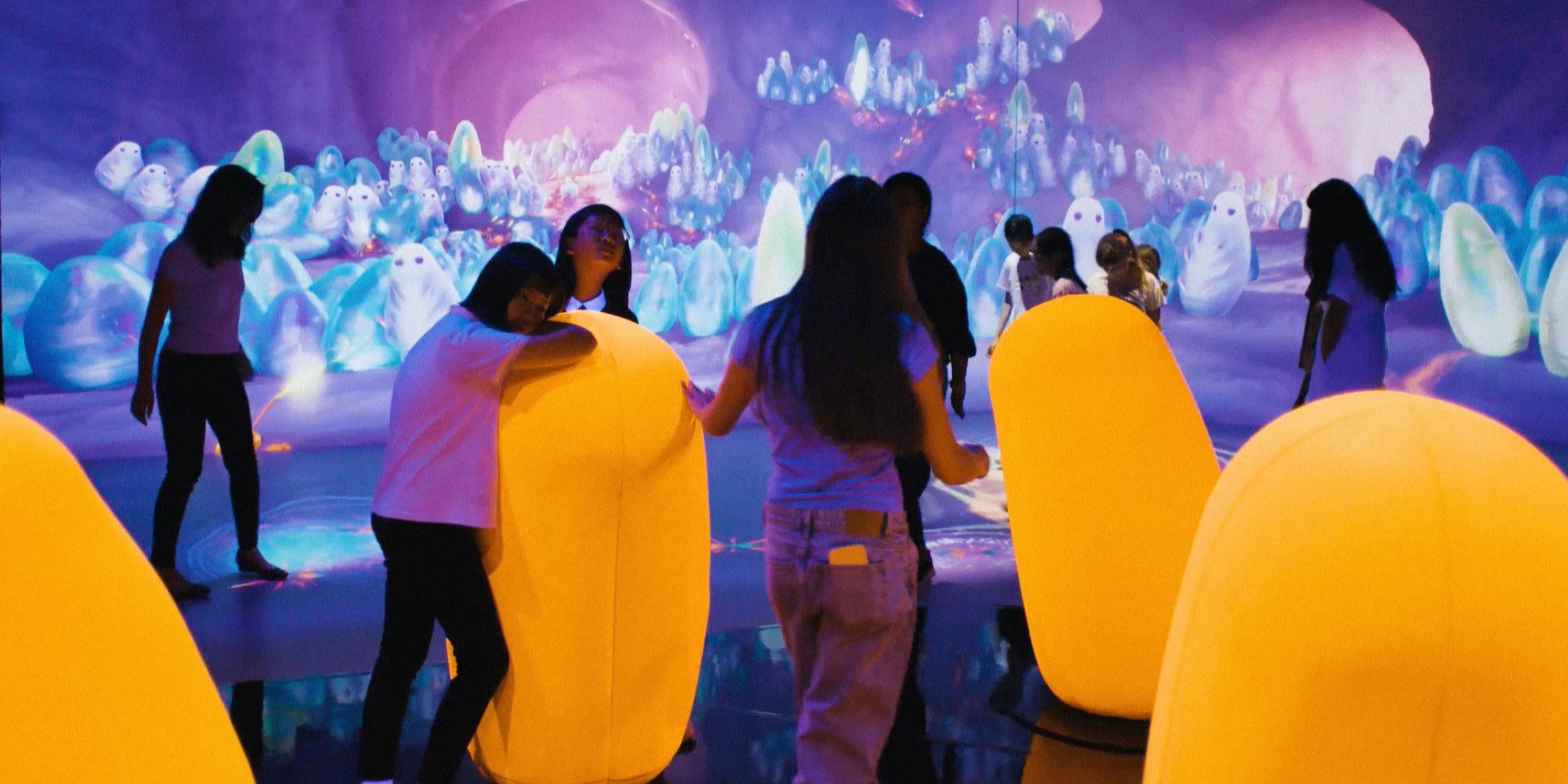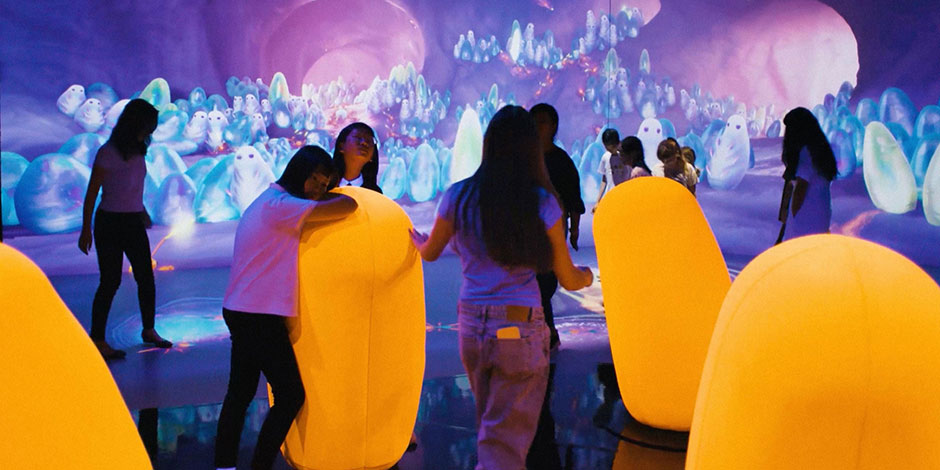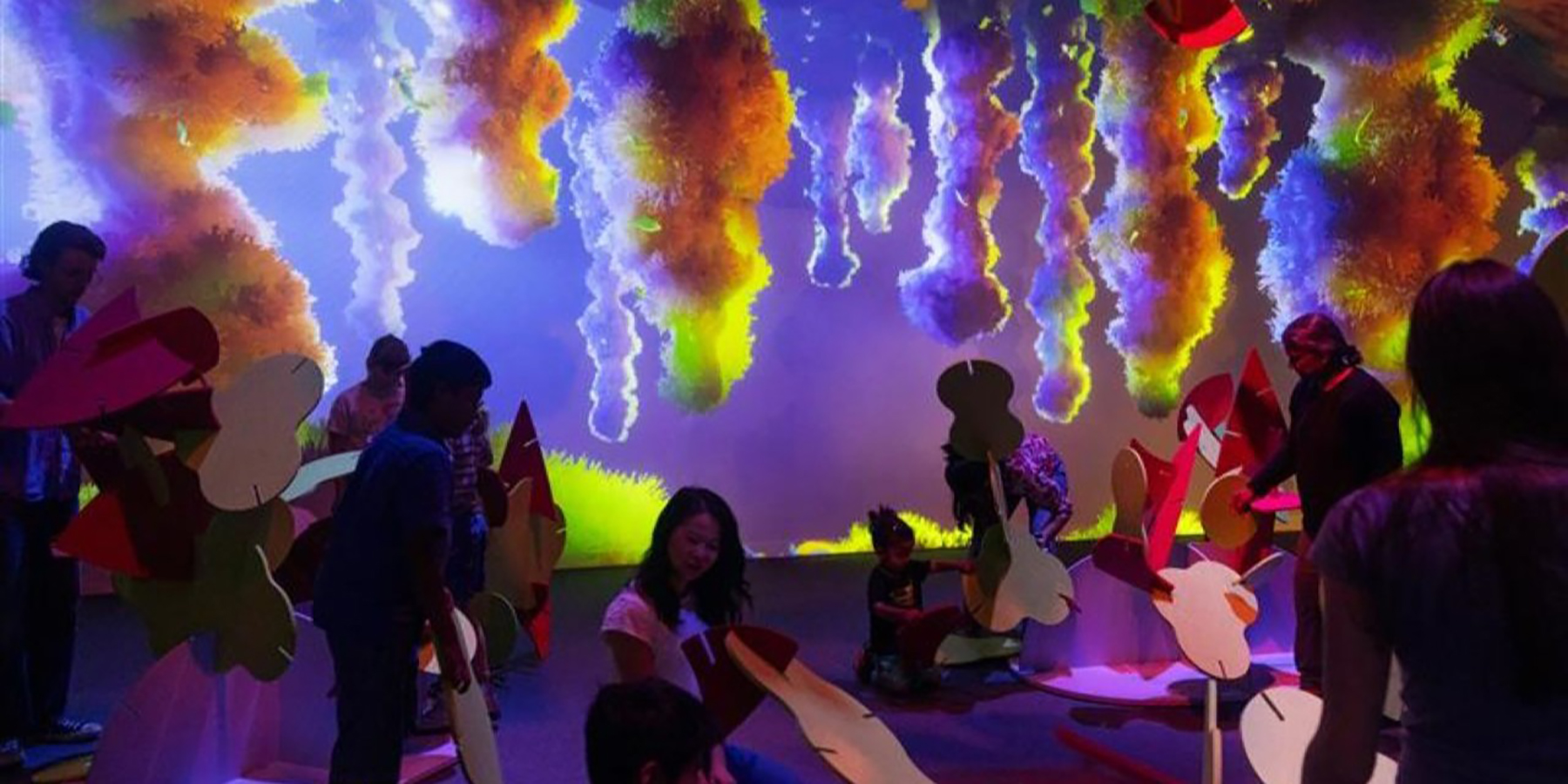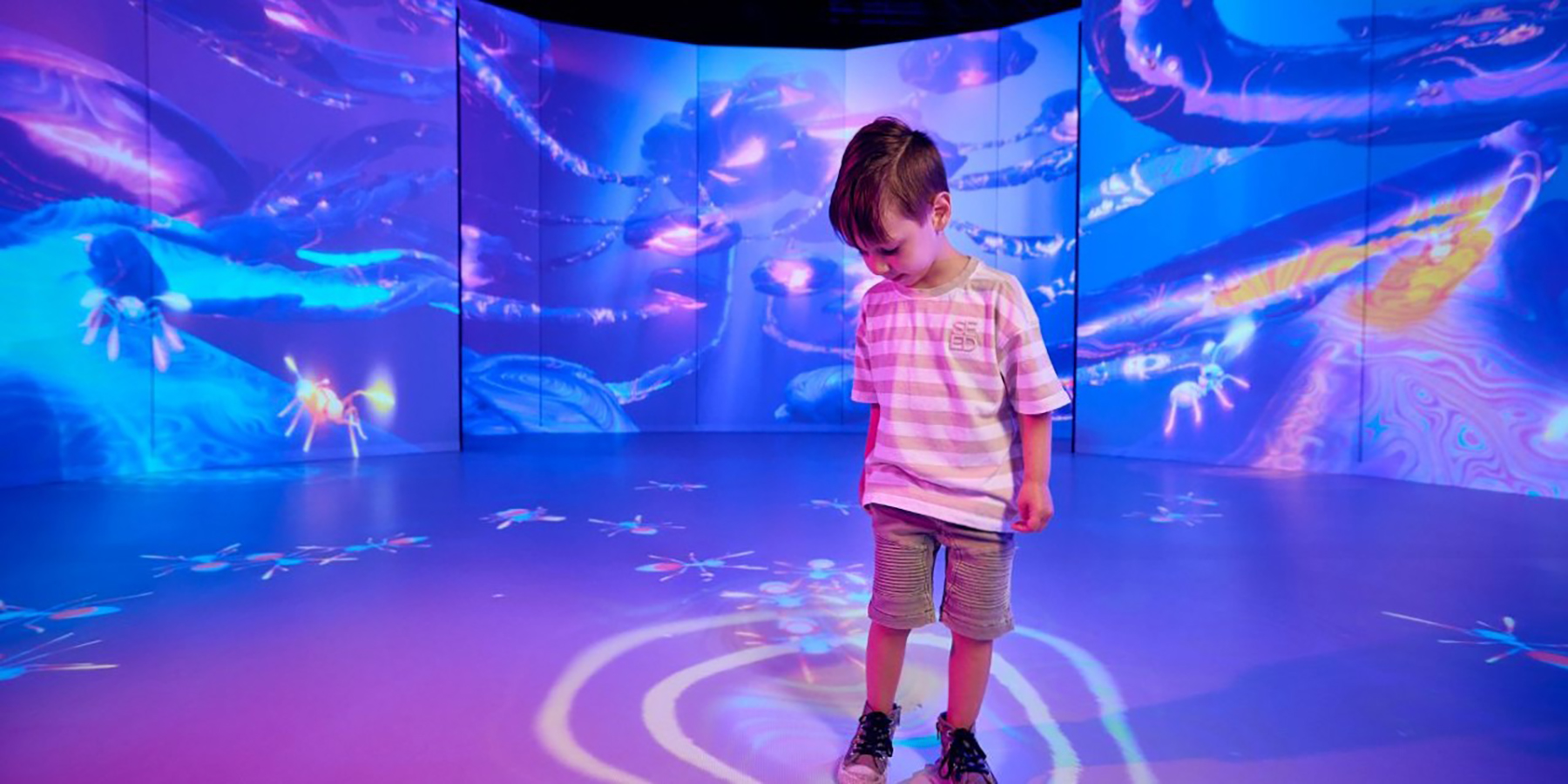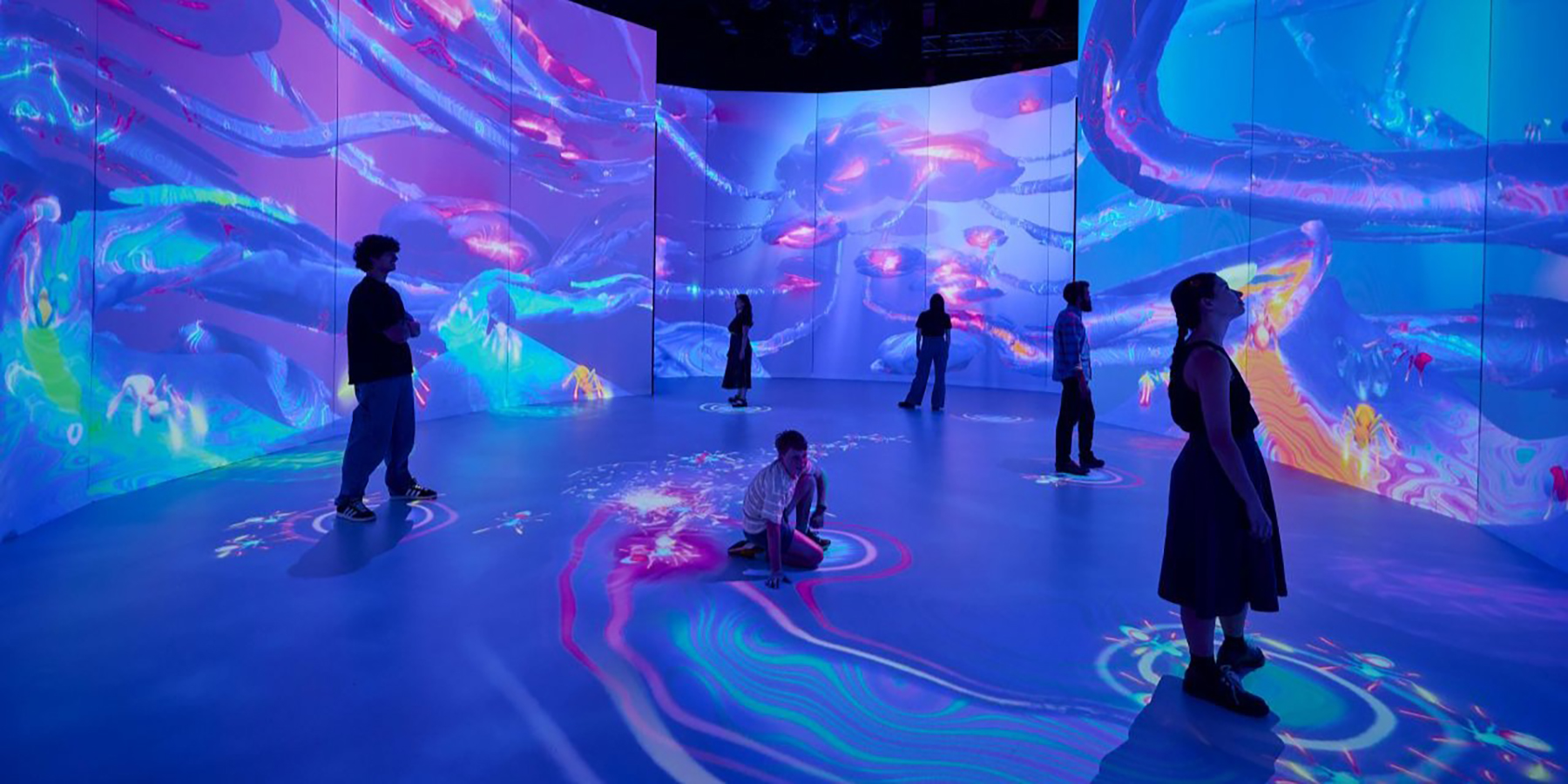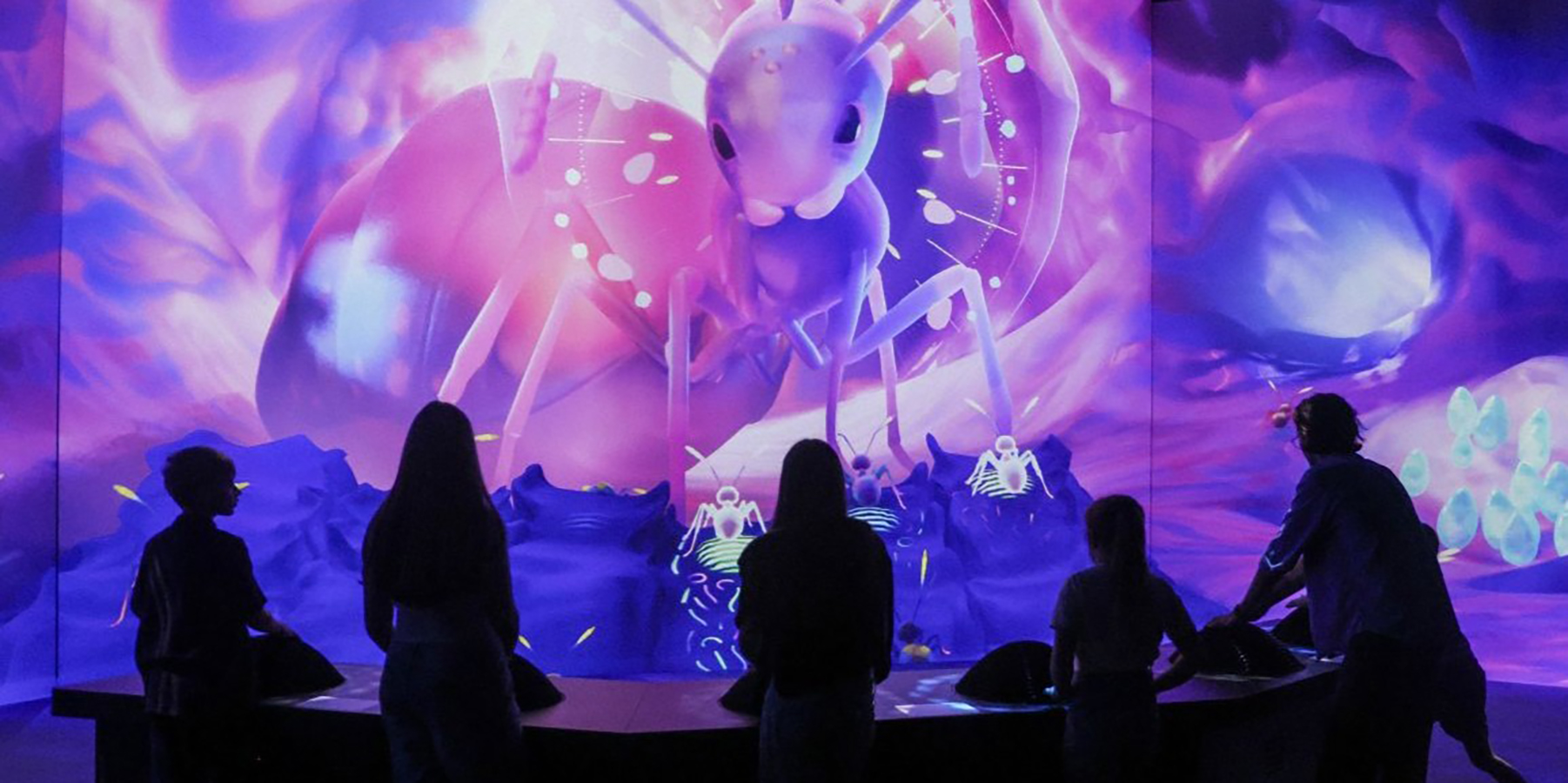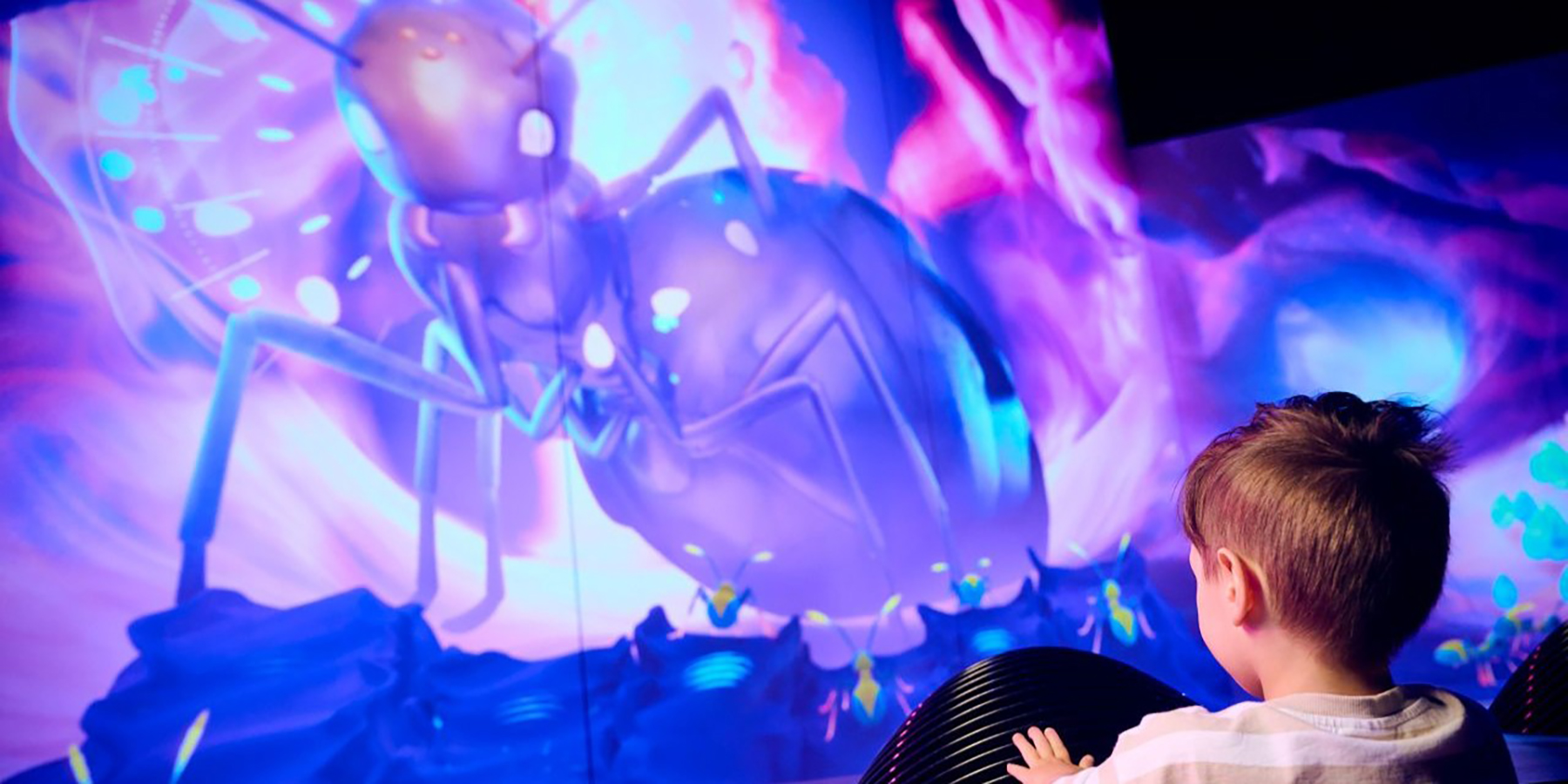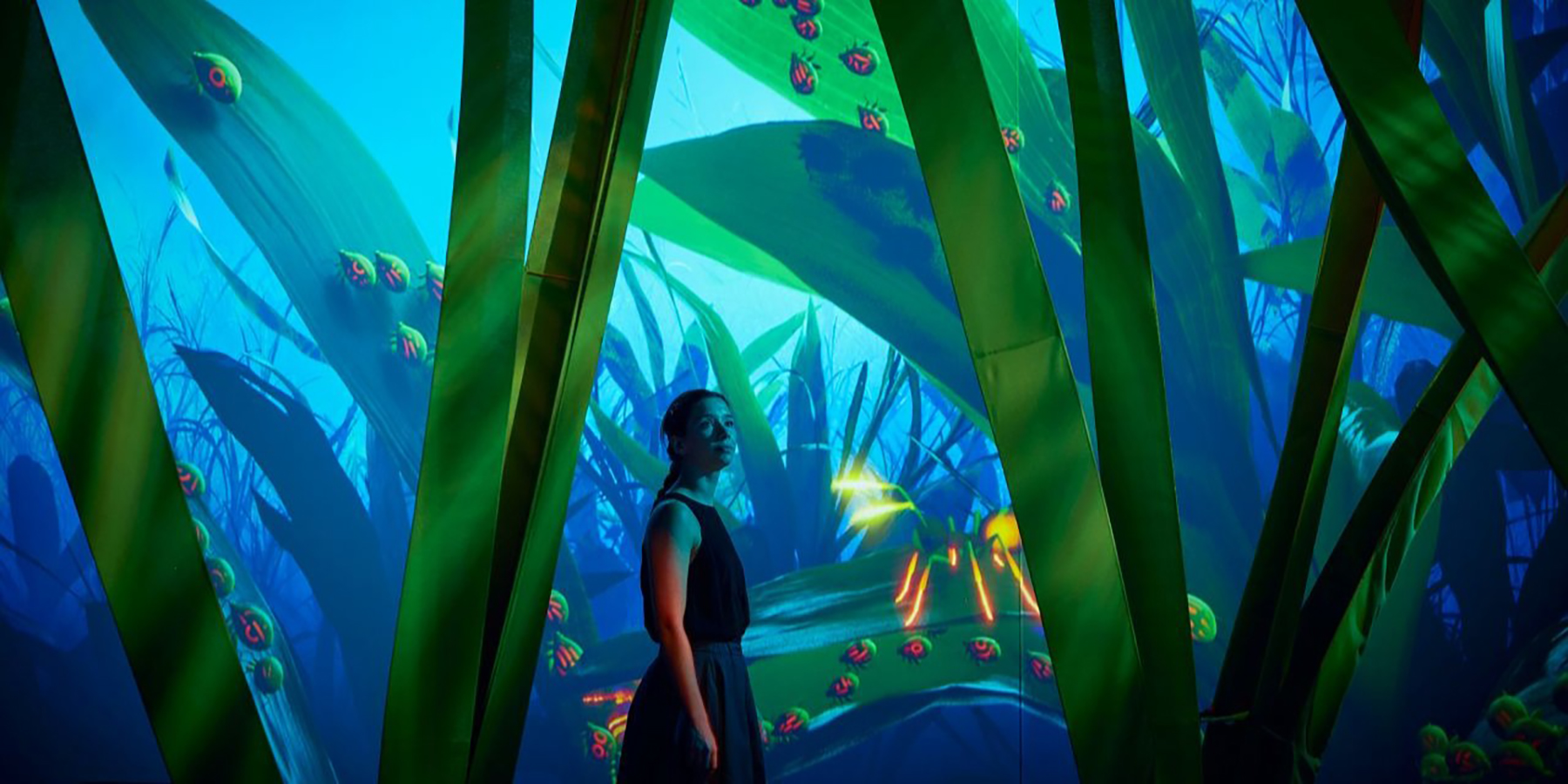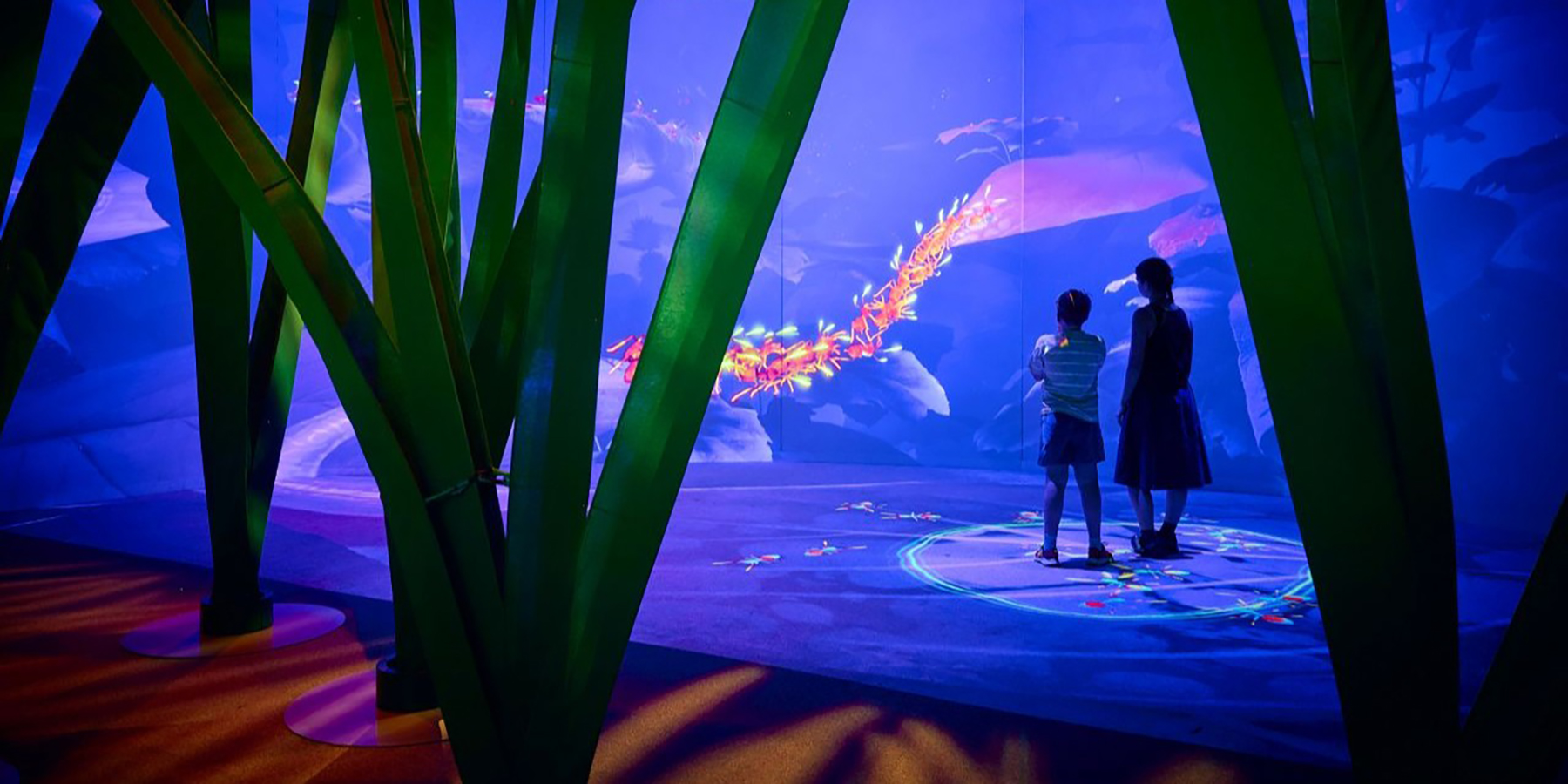Museums Victoria’s Experience Development and Design teams led a professional, iterative process to explore and refine the theme of ants, collaborating closely with in-house scientists and curators to ground the experience in contemporary entomology.
The spatial design process began with research into the diverse nest-building behaviours of ant species, from nomadic trails to woven tree nests and subterranean chambers. This inspired the layout of eight immersive zones, each with distinct spatial qualities: Introduction, Pheromone Wash, Central Hub, Queen’s Chamber, Nursery, Pantry, Outside, and Zoom Out. These environments offer a range of embodied learning experiences, designed to highlight the intelligence and interdependence of ant colonies as superorganisms.
The communication design team faced the challenge of interpreting pheromone communication—an invisible, scent-based language—into an accessible, multisensory format. Through innovative use of motion-tracking and responsive projection, they developed a vibrant visual system of colour trails that respond to visitor movement. This transformed a complex biological process into a participatory and intuitive game mechanic, supporting exploration, understanding, and emotional connection.
This key mechanism, visually rendering unseen ant behaviours, fulfilled the exhibition’s aim to foster new perspectives through embodied learning, while delivering on the broader mission to inspire environmental care.
The project exceeded its brief through the integration of science, storytelling, spatial immersion and interactivity. Executed to a high professional standard under tight time constraints, the exhibition presents a bold model for translating complex science into joyful, inclusive public experiences.

